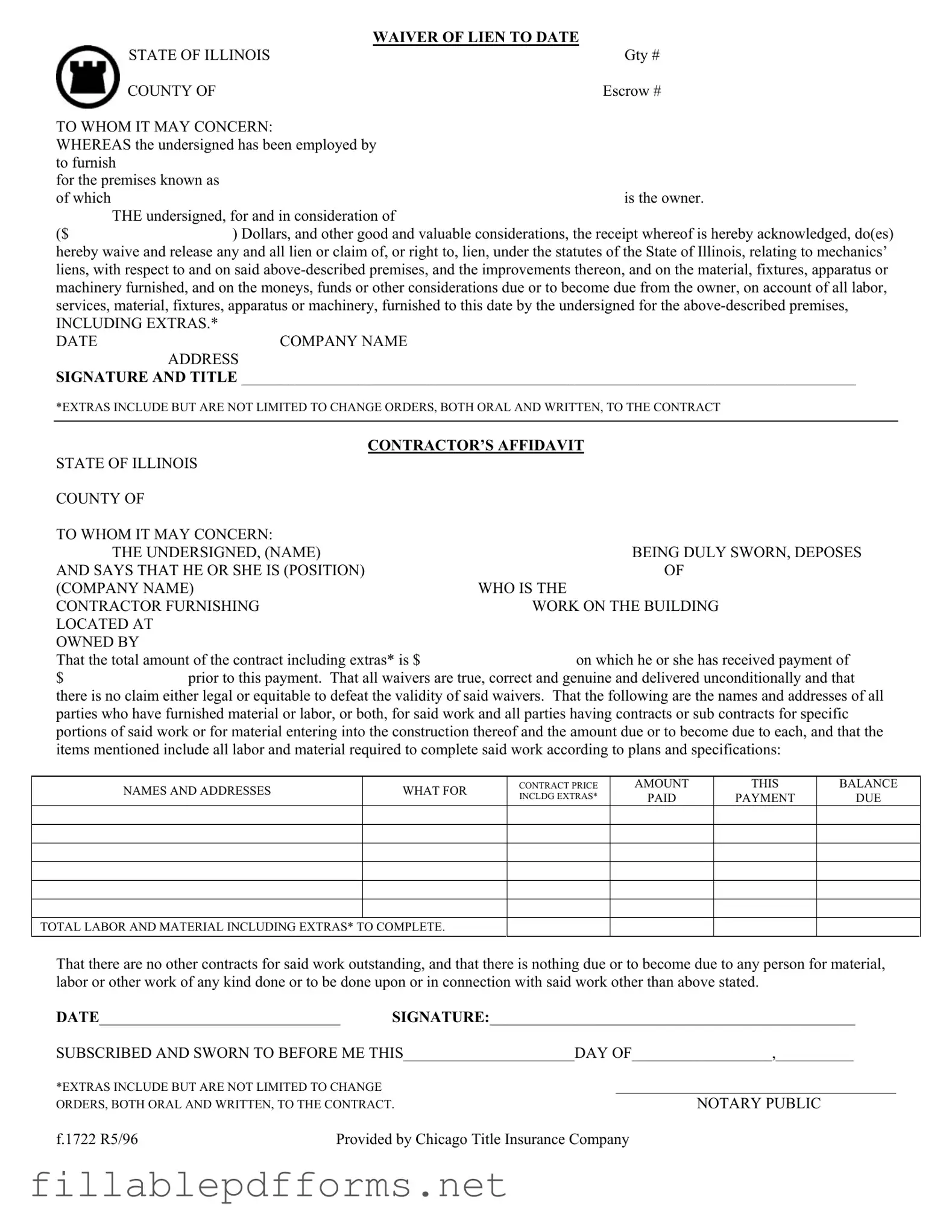The Chicago Title Waiver Format form serves as a crucial document in real estate transactions, particularly within the state of Illinois. This form is designed to protect both property owners and contractors by formally waiving any claims to liens that may arise from unpaid work or materials supplied. It begins with essential identifying information, including the company name, property details, and the parties involved. The contractor acknowledges receipt of payment and confirms that all services, materials, and any extras provided up to the date specified are accounted for. This includes change orders, which may be either oral or written, ensuring clarity in the financial obligations associated with the project. The form also requires the contractor to affirm that no additional claims exist against the property, providing peace of mind to the owner. By including a contractor's affidavit, the document further reinforces the validity of the waivers, establishing a comprehensive overview of all parties involved in the work and their respective financial standings. Ultimately, the Chicago Title Waiver Format form is not just a legal necessity; it is a tool for fostering trust and transparency in construction-related transactions.
